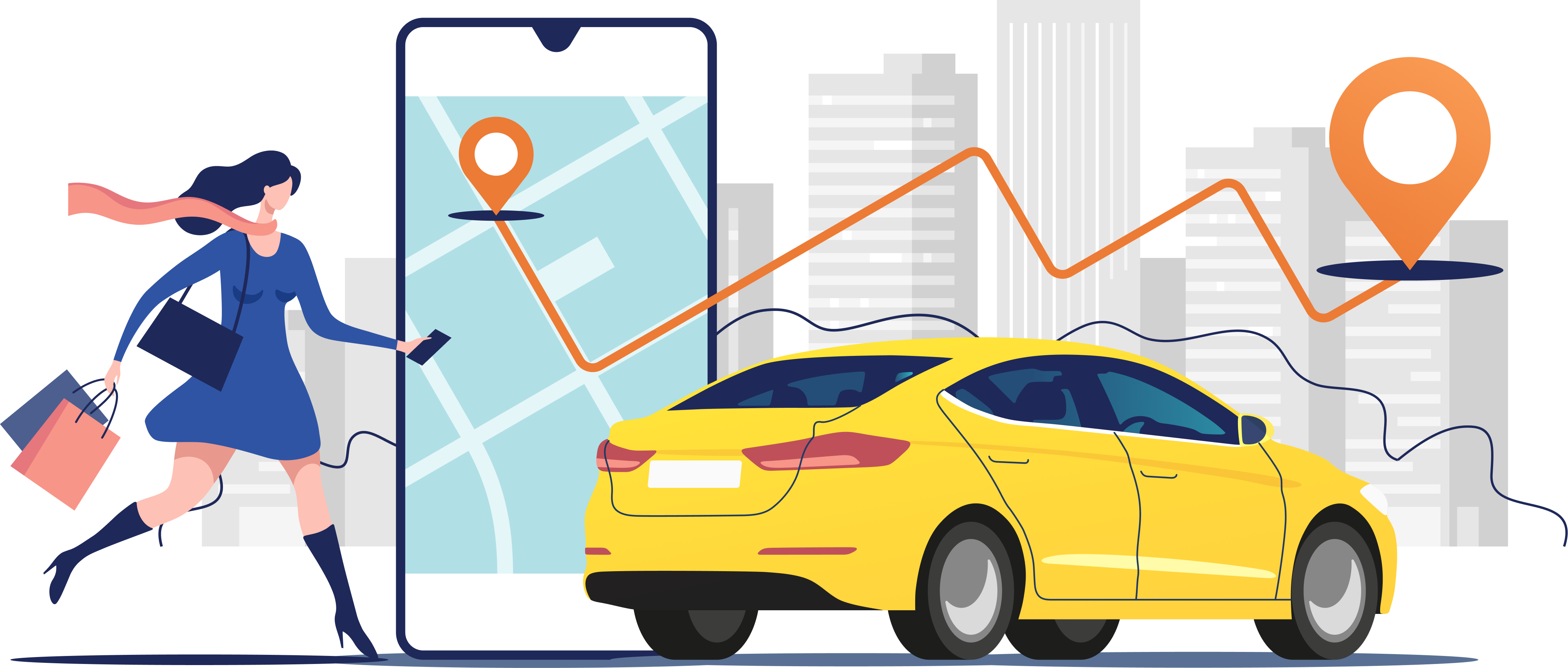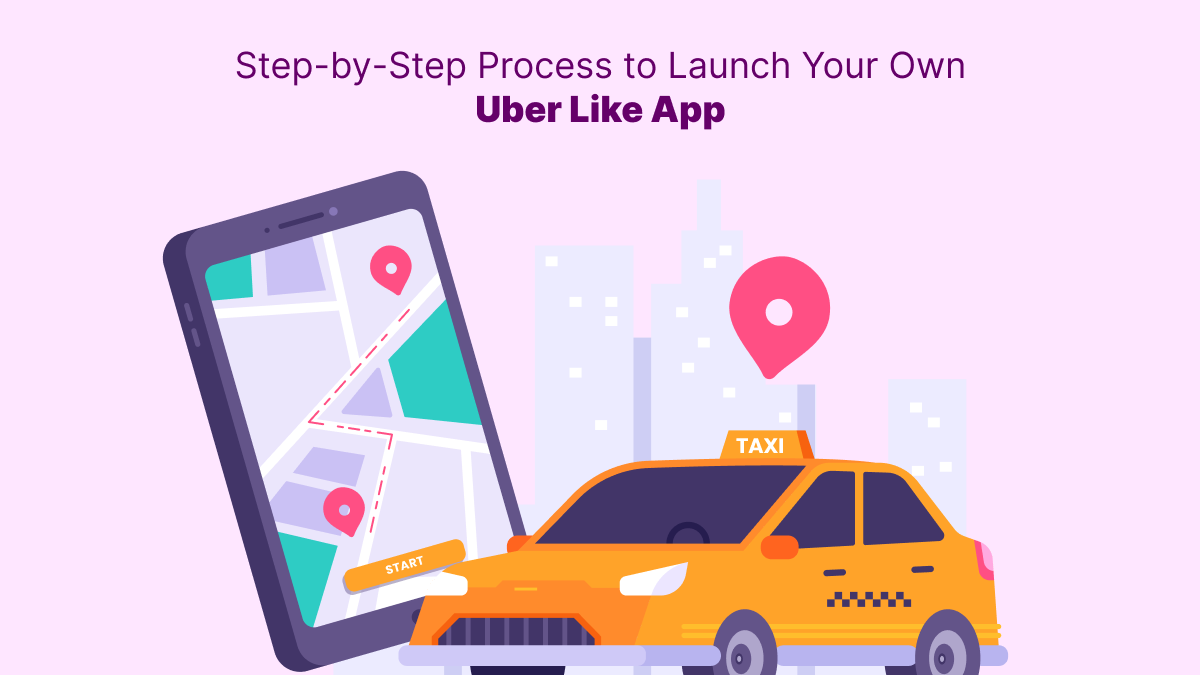The ride-hailing industry has seen tremendous growth over the past decade, transforming how people commute in urban areas. Apps like Uber have set the standard for convenience, speed, and safety, creating immense opportunities for entrepreneurs and startups. If you are looking to enter this market, launching an Uber-like app can be a highly profitable move. Such an app allows users to book rides instantly while providing drivers with an efficient platform to manage requests and earnings.
In this guide, we will walk you through the step-by-step process of launching your own Uber clone app. From understanding the concept and features, planning and designing, to development, testing, marketing, and scaling, this guide covers everything you need to start your on-demand taxi business successfully in 2025.
Understanding the Uber-Like App Model
What is an Uber-Like App?
An Uber-like app is a digital platform connecting users with service providers on-demand. While Uber focuses on ride-hailing, the model can be adapted for multiple services like food delivery, logistics, or home services. The app allows users to request rides instantly, track drivers in real-time, make secure payments, and provide feedback.
How It Works
The platform usually consists of three components: the user app, the driver app, and the admin panel. The user app allows customers to request rides, make payments, and rate drivers. The driver app enables drivers to accept rides, track navigation, and monitor earnings. The admin panel manages the entire system, monitors operations, and handles analytics and payments.
Why Businesses Choose Uber-Like Apps
Uber-like apps streamline operations, reduce manual intervention, and enhance user satisfaction. They allow businesses to manage rides, drivers, and payments efficiently while providing a scalable platform for growth.
Step 1: Conduct Market Research
Before you start building your Uber-like app, it is essential to understand the market.
Identify Your Target Audience
Determine who your potential customers are. Are you targeting urban commuters, corporate clients, or tourists? Understanding your audience helps in designing the app features, pricing models, and marketing strategies.
Analyze Competitors
Study your local competitors and international players. Analyze their strengths, weaknesses, and service gaps. Identify what features or services you can offer to differentiate your app.
Assess Market Demand
Evaluate the demand for ride-hailing services in your target location. Look at traffic patterns, population density, vehicle availability, and user expectations. This helps in deciding pricing strategies and driver allocation.
Step 2: Choose a Business Model
The revenue model plays a critical role in the long-term success of your app. Popular models include:
Commission-Based Model
Earn a percentage of every ride booked through the app. This is the most common and widely used model.
Subscription Model
Offer premium subscriptions to users or drivers that include benefits like priority booking or discounts on rides.
Surge Pricing
Increase fares during peak hours to manage demand and maximize profits.
Advertising and Promotions
Incorporate in-app advertising or promotional partnerships with local businesses to generate additional revenue.
Step 3: Define App Features
A successful Uber-like app must include essential features for riders, drivers, and administrators.
Rider App Features
- Easy Registration: Sign up using email, phone number, or social media.
- Ride Booking: Select pickup and drop-off locations via an interactive map.
- Real-Time Tracking: Track the driver’s location and estimated arrival time.
- Fare Estimation: Display the approximate fare before booking.
- Multiple Payment Options: Accept payments via card, digital wallet, or cash.
- Ratings and Reviews: Allow riders to rate drivers and provide feedback.
- Ride History: Enable users to view past trips and invoices.
- Push Notifications: Alert users about ride confirmations, promotions, and updates.
Driver App Features
- Profile Management: Upload identity documents, vehicle details, and photos.
- Ride Requests: Accept or reject incoming bookings.
- Navigation and Route Optimization: Use GPS for efficient routing.
- Earnings Tracker: Monitor daily, weekly, and monthly earnings.
- Availability Toggle: Set online/offline status.
- Trip History: Track completed rides and customer feedback.
- Ratings and Reviews: View rider ratings and improve service quality.
Admin Panel Features
- Dashboard Overview: Monitor active rides, users, drivers, and revenue in real-time.
- User and Driver Management: Add, edit, or remove accounts as needed.
- Payment Management: Process transactions, commissions, and driver payouts.
- Analytics and Reports: Track peak hours, popular routes, and service trends.
- Promotions and Discounts: Run referral programs and discount campaigns.
- Driver Verification: Ensure drivers meet legal and safety standards.
Step 4: UI/UX Design
Designing an intuitive, user-friendly interface is crucial for the success of your app.
Rider App Design
The rider app should prioritize simplicity and ease of use. Booking a ride, making payments, and tracking drivers should be accessible in a few taps. Use clear icons, readable fonts, and smooth animations to enhance experience.
Driver App Design
The driver app should be functional and minimalistic. Features like ride acceptance, navigation, and earnings tracking should be easily accessible to avoid distraction while driving.
Admin Panel Design
The admin panel should provide a clear overview of operations with accessible data, graphs, and dashboards. Admins should be able to manage users, drivers, payments, and analytics efficiently.
Step 5: Choose the Right Technology Stack
Backend Development
The backend manages ride requests, user data, payments, and analytics. Popular technologies include Node.js, Python, Ruby on Rails, or PHP. A robust backend ensures scalability and smooth app performance.
Frontend Development
The frontend includes rider and driver interfaces. You can choose native development for iOS and Android or cross-platform frameworks like React Native. Native apps provide better performance, while cross-platform reduces development time and cost.
GPS Integration
GPS allows real-time tracking of drivers and riders. Route optimization algorithms reduce travel time and improve user satisfaction.
Payment Gateway Integration
Integrate multiple secure payment methods with encryption and tokenization for safe transactions. Ensure compliance with local financial regulations.
Cloud Hosting and Storage
Use cloud infrastructure for scalable storage, high performance, and data security. Cloud hosting ensures smooth app performance even during peak hours.
Read more: Step-by-Step Guide to Launching an Uber Clone Script
Step 6: Development Process
Frontend and Backend Development
Develop the rider and driver apps simultaneously with the backend to ensure seamless integration. Real-time updates, notifications, and payment processing should work without lag.
API Integration
Incorporate third-party APIs for maps, payments, messaging, and push notifications. APIs enhance app functionality and speed up development.
Testing and Quality Assurance
Conduct extensive testing for functionality, performance, security, and usability. Beta testing with a small audience helps identify and fix issues before the public launch.
Step 7: Launching Your Uber-Like App
App Store Submission
Submit the app to Google Play Store and Apple App Store. Follow guidelines carefully to prevent rejections. Include screenshots, descriptions, and promo materials to attract users.
Marketing Strategies
Promote your app to attract riders and drivers. Use social media campaigns, influencer marketing, referral programs, and local advertising. Highlight benefits like convenience, safety, and affordability.
Feedback and Improvement
Gather user feedback to identify areas for improvement. Regular app updates enhance user experience, retain customers, and maintain competitiveness.
Step 8: Scaling Your Taxi Business
Adding Advanced Features
Introduce features like multi-stop rides, carpooling, AI-based ride suggestions, in-app chat, and loyalty programs. These features increase engagement and revenue potential.
Geographic Expansion
Start in one city and expand gradually to new regions. Ensure driver availability, logistics, and support services are in place before entering new markets.
Analytics for Growth
Use analytics to monitor peak hours, popular routes, customer preferences, and revenue patterns. Data-driven decisions help optimize operations and scale efficiently.

Challenges in Launching an Uber-Like App
Market Competition
The ride-hailing industry is highly competitive. Differentiation through unique features, superior user experience, and strong marketing is essential.
Regulatory Compliance
Comply with local transportation laws, driver verification requirements, insurance, and safety standards to avoid legal issues.
Driver and Rider Retention
Maintaining a balance between rider demand and driver supply is crucial. Incentives, referral programs, and responsive support help retain users and drivers.
Technology Management
Managing real-time tracking, multiple payment options, and data security requires a reliable technical foundation and ongoing maintenance.
Conclusion
Launching your own Uber-like app provides startups and entrepreneurs with a fast, scalable, and cost-effective entry into the ride-hailing market. By carefully planning market research, defining app features, selecting the right technology, designing an intuitive user experience, and implementing robust development and testing processes, businesses can create a platform that attracts riders and drivers alike. Partnering with a reliable on demand app development company guarantees that your app is secure, scalable, and capable of meeting modern user expectations, paving the way for long-term success in the on-demand mobility sector.
FAQs
What is an Uber-like app?
An Uber-like app is a platform that connects users with service providers on-demand, offering features like instant booking, real-time tracking, secure payments, and ratings.
What are the essential features of an Uber-like app?
Core features include ride booking, GPS tracking, fare estimation, multiple payment options, ratings, driver management, and an admin dashboard.
How long does it take to develop an Uber-like app?
Depending on the complexity and features, development typically takes between 3–6 months.
Can an Uber-like app be customized?
Yes, the app can be customized to include branding, additional features, and integrations according to business needs.
How do Uber-like apps generate revenue?
Revenue comes from commissions on rides, subscriptions, surge pricing, advertisements, and premium services for drivers or riders.


